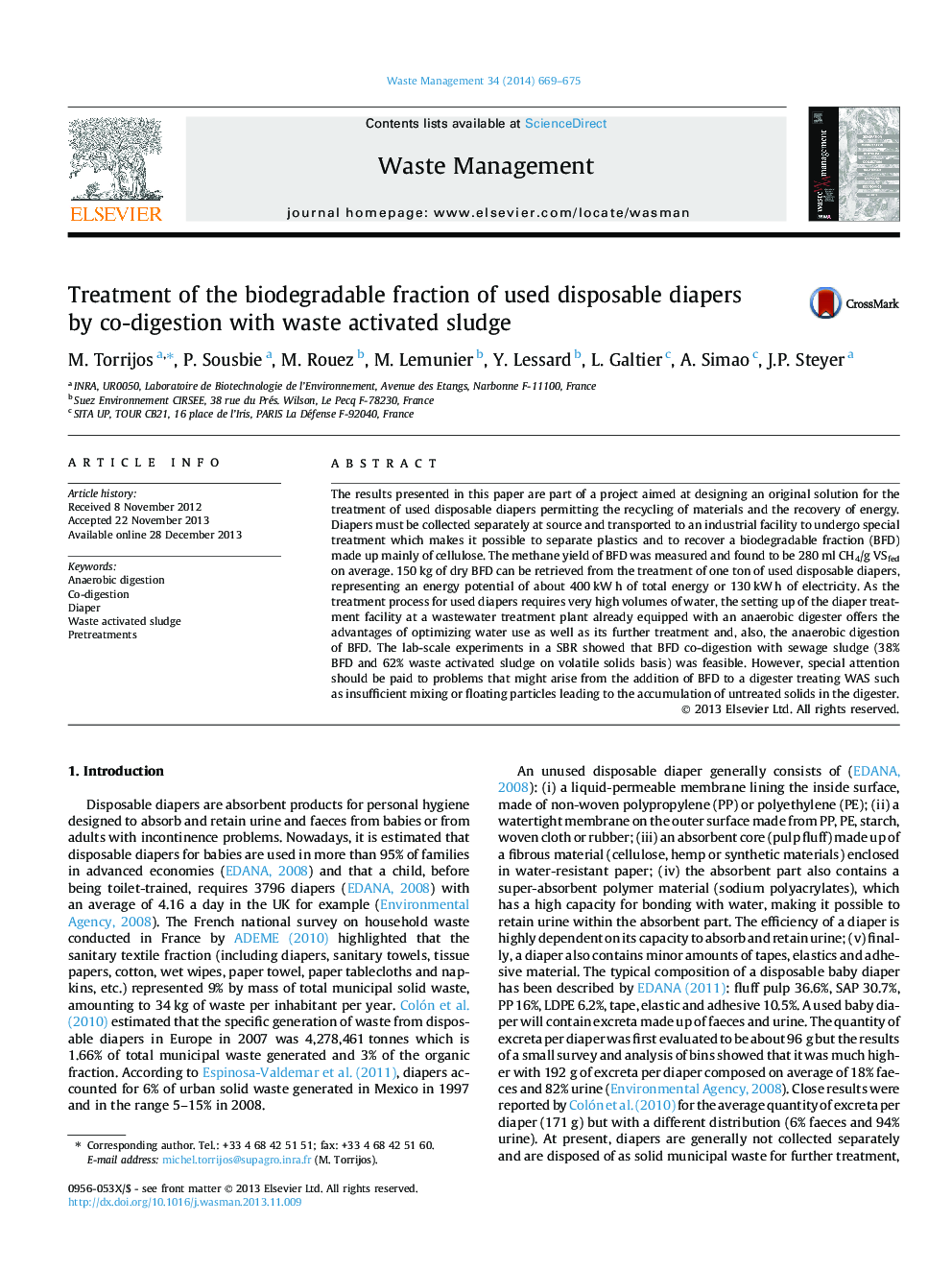| کد مقاله | کد نشریه | سال انتشار | مقاله انگلیسی | نسخه تمام متن |
|---|---|---|---|---|
| 6355390 | 1315042 | 2014 | 7 صفحه PDF | دانلود رایگان |
- Design of a new solution for the treatment of used disposable diapers with recycling.
- Methane yield of the biodegradable fraction of diapers (BFD) was 280Â ml CH4/g VSfed.
- 1Â ton of diapers gives 150Â kg of dry BFD representing an energy potential of 130Â kWÂ h.
- Co-digestion of BFD with waste activate sludge is technically feasible.
- The treatment of diapers at a WWTP optimizes water use and anaerobic digestion of BFD.
The results presented in this paper are part of a project aimed at designing an original solution for the treatment of used disposable diapers permitting the recycling of materials and the recovery of energy. Diapers must be collected separately at source and transported to an industrial facility to undergo special treatment which makes it possible to separate plastics and to recover a biodegradable fraction (BFD) made up mainly of cellulose. The methane yield of BFD was measured and found to be 280Â ml CH4/g VSfed on average. 150Â kg of dry BFD can be retrieved from the treatment of one ton of used disposable diapers, representing an energy potential of about 400Â kWÂ h of total energy or 130Â kWÂ h of electricity. As the treatment process for used diapers requires very high volumes of water, the setting up of the diaper treatment facility at a wastewater treatment plant already equipped with an anaerobic digester offers the advantages of optimizing water use as well as its further treatment and, also, the anaerobic digestion of BFD. The lab-scale experiments in a SBR showed that BFD co-digestion with sewage sludge (38% BFD and 62% waste activated sludge on volatile solids basis) was feasible. However, special attention should be paid to problems that might arise from the addition of BFD to a digester treating WAS such as insufficient mixing or floating particles leading to the accumulation of untreated solids in the digester.
Journal: Waste Management - Volume 34, Issue 3, March 2014, Pages 669-675
